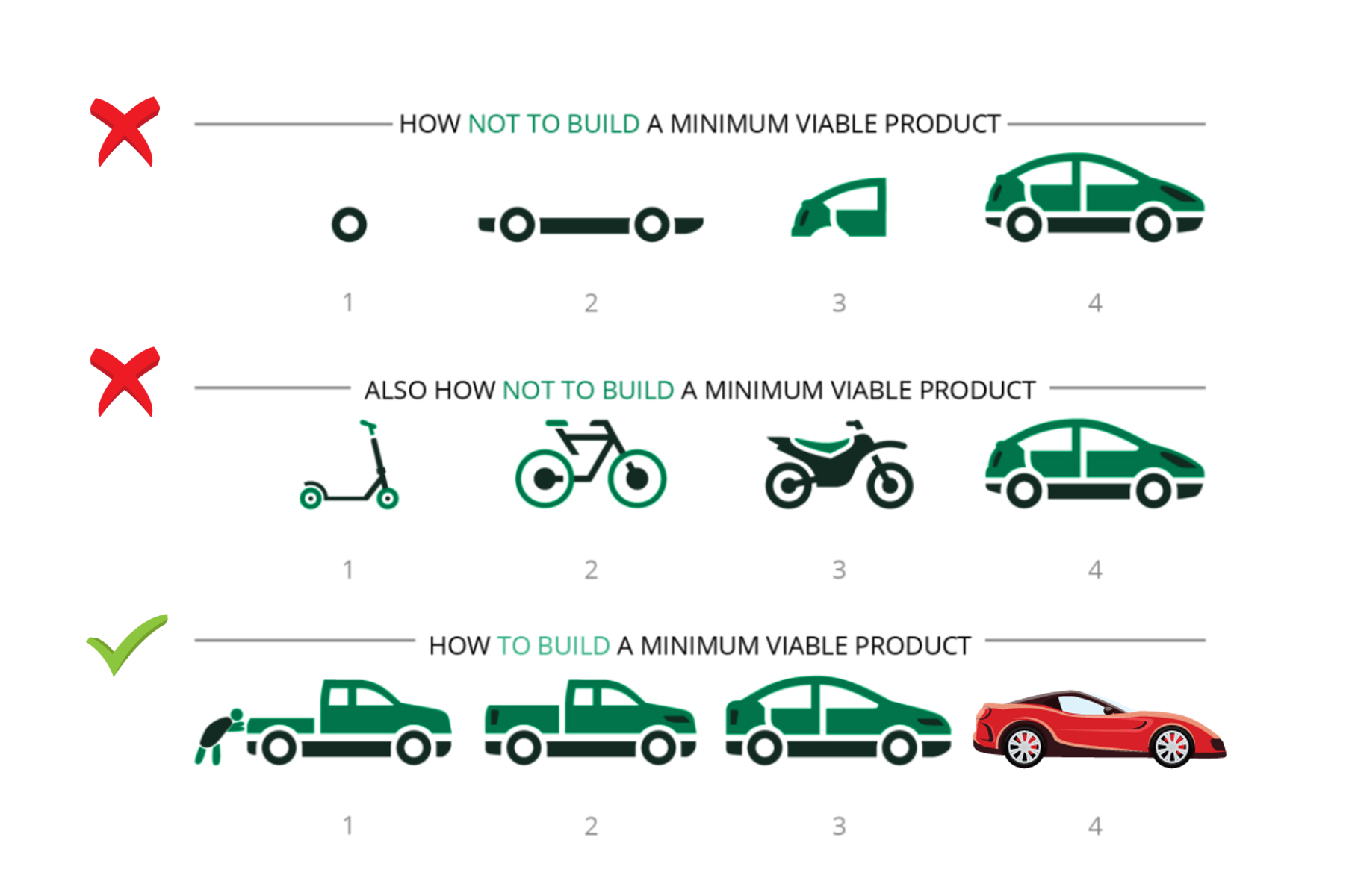Building a minimum viable product for your minimum viable audience is a key element of success for early-stage startups.
To generate revenue from your product or service at scale, you’ll need to establish product market fit — when a company develops an offering that is proven, through sales and other metrics, to meet the needs of a specific customer base. Building a minimum viable product (MVP) and identifying a minimum viable audience (MVA) are the first steps in this journey.
Many startup founders and early-stage employees are on the same journey — and it’s one of the most common areas of need for York IE’s Advisory as a Service clients.
Let’s take a look at some key strategies I’ve learned in my years of product management and development.
What Is a Minimum Viable Audience?
A minimum viable audience is the smallest target group of customers that could still offer enough revenue-making opportunities to grow your business. Finding this audience is just as crucial as building your minimum viable product.
It’s great to have a big vision. You should want every company in the world to use your product — eventually. But in the early stages, trying to build and market a product for everyone isn’t possible.
Decide on your intended audience and spend the entire MVP development process building with this persona in mind. This subsect of customers is what makes up your MVA.
When you’re developing a product for a specific audience and a specific use case, you’ll be able to ruthlessly prioritize features and quickly get more customer feedback.
The Path to Product Market Fit
Building an MVP is a key step on the path to product market fit.
Learn how in this video.
WATCH NOW
How to Build a Minimum Viable Audience
So where should you start with your minimum viable audience? Here’s how I would approach it:
- Research your market.
- Identify potential customers you can actually reach.
- Gather feedback.
1. Research Your Market
It’s important to be open to different potential target audiences. Your first idea of an MVA might not be the best possible opportunity in the market.
Look around to find user personas that: a.) have a need for your offering; and b.) will pay for it. Perhaps a certain market is ripe with venture capital funding, giving them more cash to spend. Maybe recent laws or regulations are creating demand in a specific industry or vertical.
2. Identify Potential Customers You Can Actually Reach
Your MVA will ideally represent a persona, industry or vertical with a true need for your product. It’ll also be a group that you can easily reach through your various marketing and sales channels.
For example, you might think your platform could work for any medium-size business. But it’s going to be quite challenging to tailor your messaging to each of these potential customers. Tightening your bullseye onto medium-size law firms, for example, would allow you to cut through the noise and reach a more specific audience.
3. Gather Feedback
Now we get to the most important step: taking insights from customers and turning them into actions. Conversations with your MVA will help you adjust your product, but they’ll also ensure your messaging and sales tactics are resonating.
Example: Finding a Minimum Viable Audience
Nailing your MVP and finding your minimum viable audience will go a long way in achieving product market fit. Remember to start small, ruthlessly prioritize and be adaptable. One of York IE’s portfolio companies, 40GRID, provides a great example.
Its founders built amazing field service software — the type of platform that could theoretically be used by anyone from a landscaper to a kitchen appliance technician. But marketing an MVP to the massive field services market was daunting. How could 40GRID break through the noise and beat larger, established competitors?
The company tapped an underserved market — pest control companies — as their MVA. They identified a lack of software platforms for this vertical; the pest industry provided a logical entry point in a market that needed 40GRID’s services. That allowed 40GRID to ruthlessly prioritize the features that mattered to their pest control customers.
In 10 years, perhaps 40GRID is being used by field services companies across industries. For now, though, 40GRID is focused on building the best possible pest control management software.
That’s the essence of building a minimum viable product for a minimum viable audience.



